This Was the Definition of “Stylish” the Year You Were Born

Though the word fashion has had the same definition for hundreds of years, what people living in the ’50s considered fashionable certainly wasn’t what folks dressing in the ’90s saw as en vogue. Every decade—and every year—can easily be defined by some significant style trend, one that once upon a time dominated catwalks and clubs alike. From the balloon jackets of the 1950s to the choker necklaces of the 1990s, here’s what the fashion-forward have deemed “stylish” throughout the years.
1950: Cinched Waists
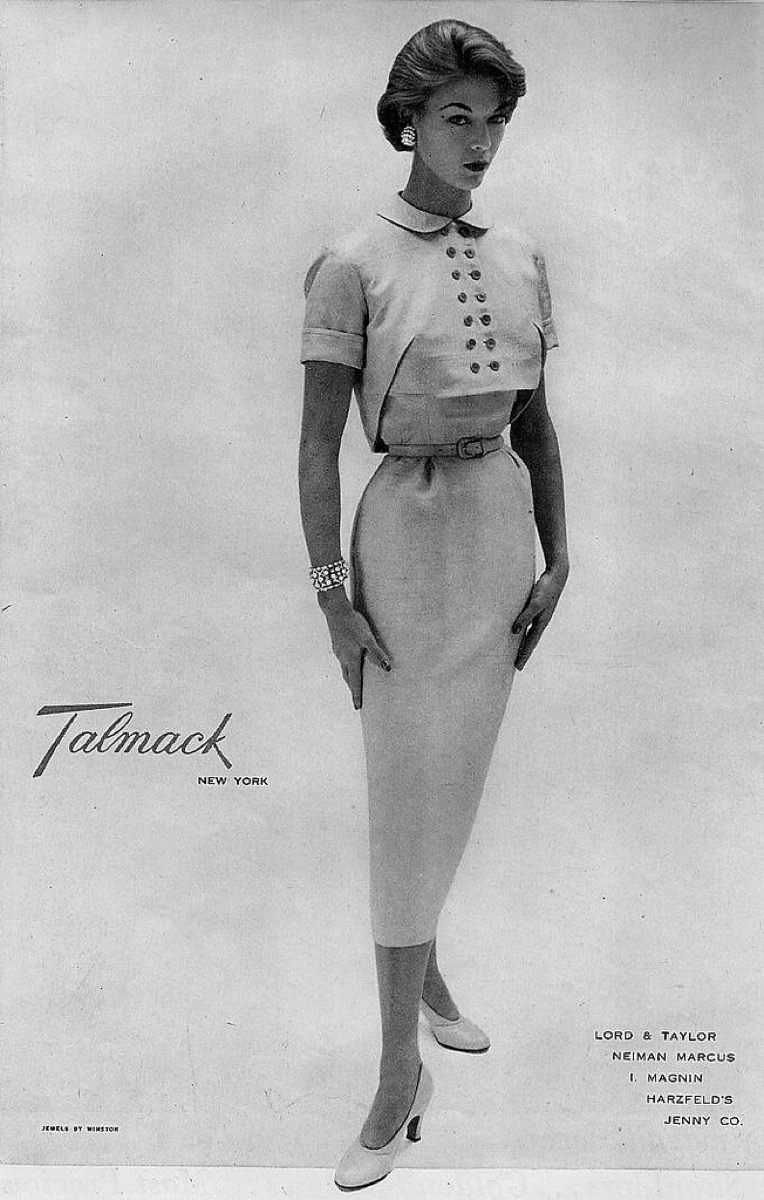
While fashion in the 1940s was characterized by shapelessness and minimal design, the 1950s brought about an era of accentuation in women’s fashion. During this time period, women’s dresses and skirts were designed to cinch at the waist in order to create that coveted hourglass figure.
1951: The Single-Breasted Suit

Rarely do you see a fashion trend that’s able to influence both men’s and women’s style, but that’s exactly what happened in the early 1950s with the revivalist reawakening. “By 1950, revivalist styles, so evident in women’s fashions, also invaded the most exclusive levels of menswear,” write the experts at the Victoria and Albert Museum in their post “Introduction to 20th Century Fashion.” The single-breasted wool suit was just one example.
1952: The Pencil Skirt
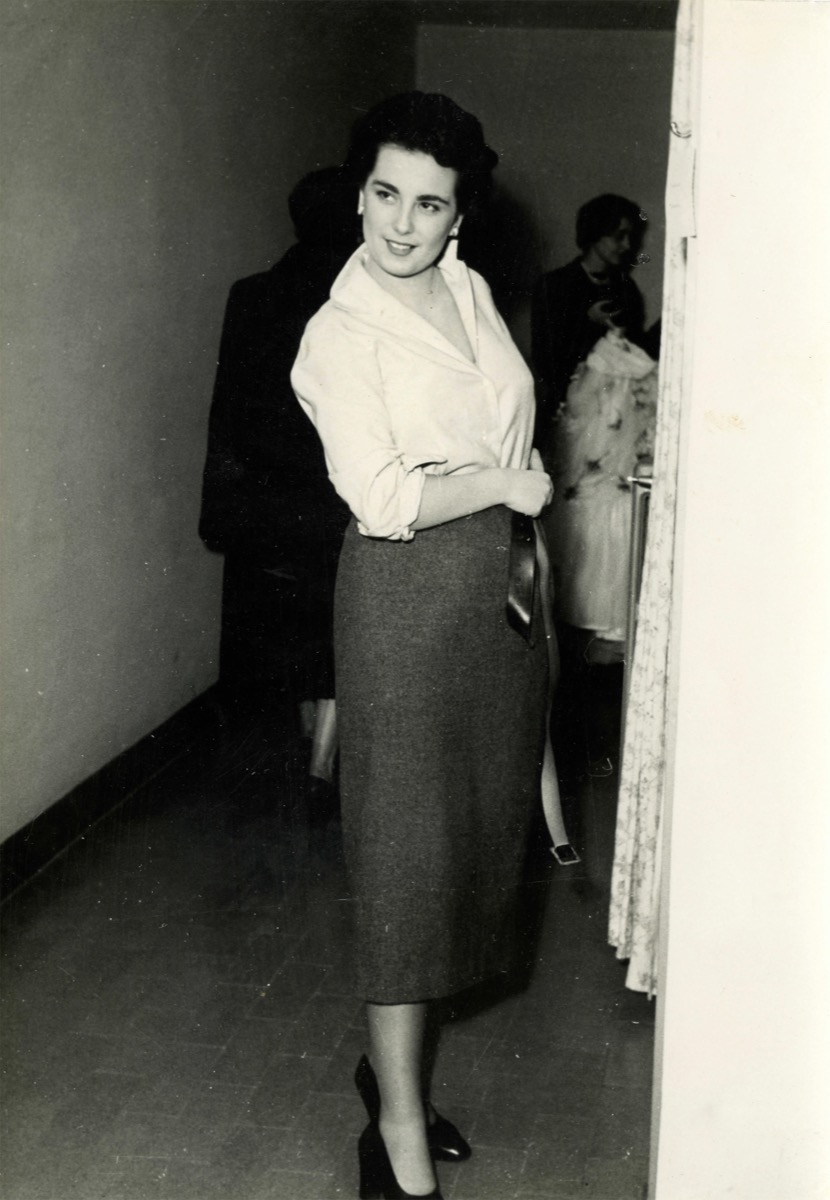
According to the British Museum, the “narrow pencil-skirt look” was a popular style that continued from the late 1940s into the 1950s. “Dresses with pencil or full skirts were seen in either plain fabrics or floral prints,” they noted.
1953: The Bikini

Though the first bikini (seen above) was unveiled in the mid-1940s, it wasn’t until 1953 that the scandalous swimsuit really became en vogue. This was largely thanks to actress Brigitte Bardot, whose decision to sport a bikini at the Cannes Film Festival launched a worldwide movement in favor of the two-piece.
1954: The Balloon Jacket

You have Cristobal Balenciaga to thank for the infamous balloon jacket. This baggy outerwear design was just one of the many things that the legendary fashion designer contributed to style in the 1950s.
1955: The A-line Skirt

The A-line skirt, defined by how it’s fitted at the hips and gradually broadens like the letter A, became a big part of the fashion world when it was first introduced in 1955 by French designer Christian Dior. However, Dior’s idea of an A-line isn’t quite what we know today; whereas the designer’s dresses and skirts featured a subtle flare in the 1950s, today’s A-line designs generally transform from a fitted waist into a much more dramatically accentuated skirt.
1956: Wide-Brimmed Hats

In the 1950s, women almost never left the house without a hat covering their head. And, according to the Victoria and Albert Museum, one of the most popular head accessories during this time was the “large brimmed, saucer-like hat,” like the one seen above.
1957: The Sack Dress

The sack dress is just what it sounds like: a dress shaped like a sack. The shapeless staple was first introduced in 1957 by Hubert de Givenchy, and its popularity signified the first real shift away from the curve-hugging trends of the early 1950s.
1958: The Boat Neck
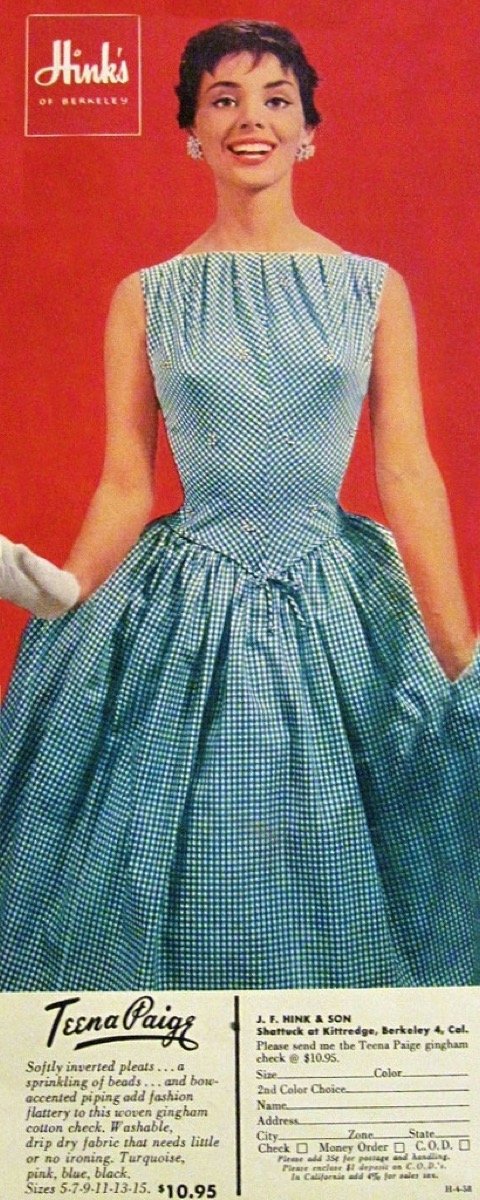
Before the 1950s, you could pretty much only find boat necks either in traditional nautical patterns or at a Chanel boutique. By the late 1950s, however, the neckline was most certainly mainstream, thanks largely in part to Audrey Hepburn’s wardrobe in the film Sabrina.
1959: The Casual “Audrey Hepburn” Look
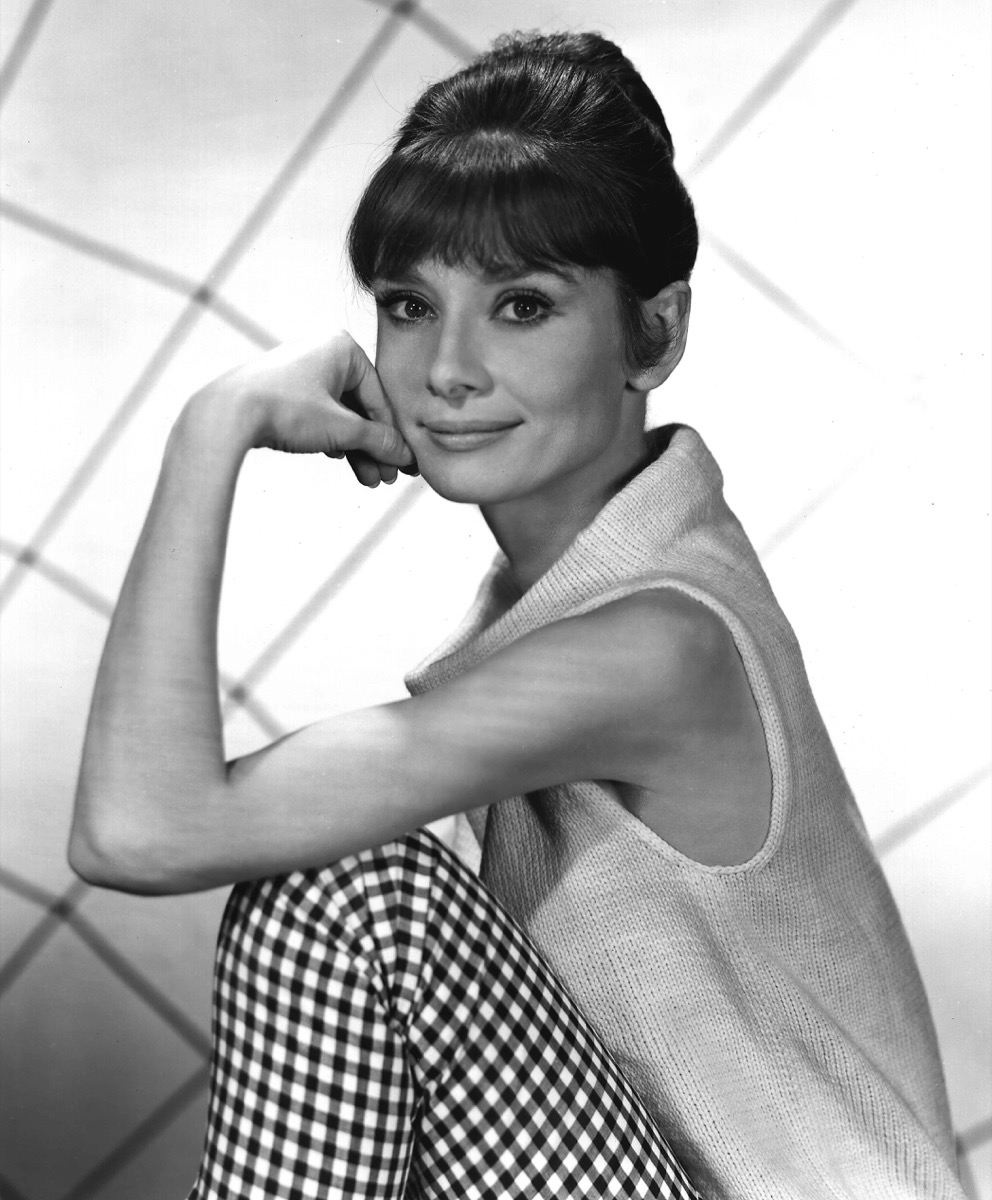
Though people looked to Audrey Hepburn as a style icon back in the 1950s, all she really did was put a face to the fashion trends that were already popular. “Capri pants, the full skirt, the sweater with the handkerchief around her neck: These were all ’50s styles,” stylist and creative director Freddie Leiba explained to Refinery29. “She glorified it.”
1960: Tweed

In the 1940s and 1950s, tweed was seen as a practical cloth that both men and women could pull off. In the 1960s, however, the material “became popular with the young, fashionable and politically progressive,” according to a detailed report from The Conversation in partnership with the University of Adelaide. What was once the building block for sensible suits became a popular fabric for everything from women’s short skirts to men’s trousers.
1961: The Pillbox Hat

Though the pillbox hat was semi-popular in the 1950s, it wasn’t until Jackie Kennedy came onto the scene that this style really became ubiquitous. The former First Lady was even wearing one of her beloved hats on the fateful day when her husband, John F. Kennedy, was tragically assassinated in 1963.
1962: Fur

Fur jackets became something of a status symbol in the early 1960s. Though the faux fur industry would soon overtake the authentic one, in the ’60s wearing real fur “evoked a signifier of a trophy wife,” as Jo Weldon, leopard print expert, told Mental Floss. Add to this the fact that political personalities like Jackie Kennedy and Queen Elizabeth were big collectors of furs, and it’s little surprise that every woman in America—if not the world—was dying to get their hands on their very own mink in the 1960s.
1963: Shift Dresses

The shift dress, first worn in the 1920s by nonconforming flappers, came back into style in the 1960s. Between the popularity of vibrant designer Lilly Pulitzer and the prominence of Audrey Hepburn’s little black shift dress in Breakfast at Tiffany’s, it didn’t take long for the fashion industry to make a shift toward this comfortable and chic dress.
1964: Go-Go Boots

Designer André Courrèges may have technically designed the go-go boot in 1964, but it’s women like Nancy Sinatra and Jane Fonda who truly turned the shoe into “a symbol of female power,” as fashion icon Tim Gunn has said. In the mid-1960s, these boots could be found on women everywhere—on women who felt wronged, on women who felt oppressed, and of course, on women who just wanted to jump into a cage and dance!
1965: Berets

“With a renewed interest in new wave French film in the 1960s came the revival of the beret as a fashion item,” notes Mic. In a different sect of society—namely among Black Panther Party members—the beret also became a symbol of rebellion, and the Parisian hat was worn as a nod to the green berets donned by soldiers.
1966: The Miniskirt

In 1964, British designer Mary Quant unveiled a radical new skirt with a hemline several inches above the knee and named it the miniskirt after the Mini, her favorite car model. Around this same time, other designers like André Courréges and Yves Saint Laurent also came out with their own iterations of the hemline—and with the help of fashion icons like Twiggy and Jean Shrimpton, short skirts had already become the new norm by 1966.
1967: Pastels

“Mod styles, tweed suits, and plenty of pastels defined the fashion of the 1960s,” notes Cosmopolitan. Lavender, baby blue, and pink were all commonly used colors in men’s and women’s fashion alike.
1968: Knit Everything

Knitted styles really began to take off toward the tail end of the 1960s. Knitted shirts, knitted sweaters, knitted sweater dresses—if you could think it, then it could be knitted.
1969: Bell-bottoms

The bell-bottom pants style that defined fashion in the 1970s first made an appearance in the late 1960s, around the time when young folks were beginning to channel their rebellious spirit. And oddly enough, bell-bottoms only became such a stylish staple because of the fact that they were commonly found at inexpensive military surplus stores in the form of navy bell-bottoms.
1970: The Hippie Look

In response to what they saw as a society “dominated by materialism and repression,” young folks in the 1970s created a social and fashion movement defined by revolt and, in the way of wardrobe, “casual, often unconventional dress, sometimes in ‘psychedelic colors,” as Encyclopedia Brittanica explains. And since the world is always changing, check out these 30 Ways Being a Kid Has Changed in the Past 30 Years.
1971: Hotpants

Hotpants—more commonly known today as booty shorts or short shorts—had their five minutes of fame in the early 1970s before becoming primarily associated with the sex industry and nightclubbing. The term was first used by fashion publication Women’s Wear Daily in 1970 to describe scandalous shorts in fabrics like velvet that, while similar in length to athletic shorts, were meant for everyday wear.
1972: Vintage Vibes

Not unlike today, fashionable females in the 1970s often chose to pair their decade-appropriate pieces with vintage finds from the ’40s, ’50s, and ’60s. It didn’t hurt that many of the styles from decades past—like the miniskirt, the platform pump, and the shift dress—were all just as prominent in the 1970s as they were when they first peaked.
1973: Glam Rock

Glam rock wasn’t just a subset of rock music, it was also a fashion movement. Performers associated with the glam rock genre—like David Bowie, Marc Bolan, and the members of Slade—all rocked classic elements of the ’70s style like platform shoes, glitter, heavy makeup, and androgynous, extravagant outfits.
1974: DVF’s Wrap Dress
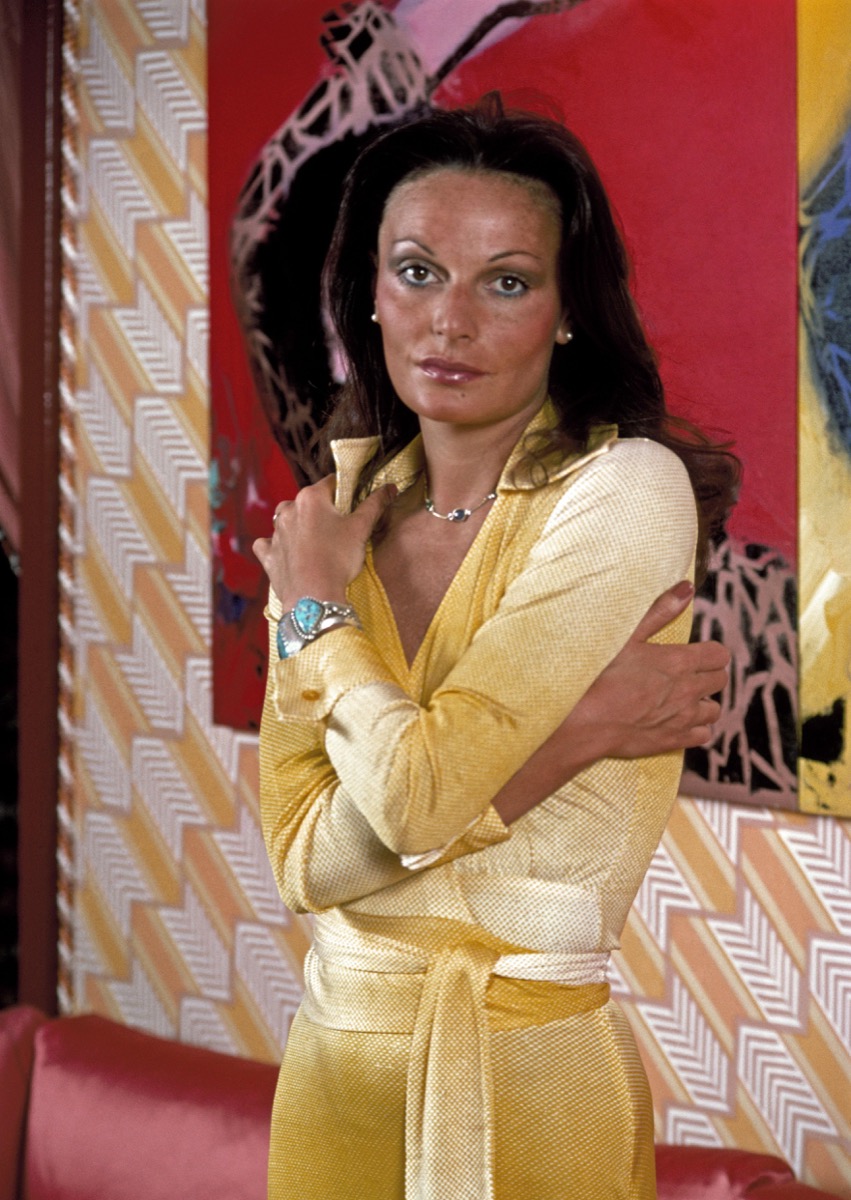
If there’s one thing that Diane Von Fürstenberg will always be remembered for, it’s the wrap dress. The Belgian-American designer released the first iteration of her famous design in the early 1970s, claiming that the formfitting dress was inspired by the burgeoning sexual awakening of women everywhere. “If you’re trying to slip out without waking a sleeping man, zips are a nightmare,” she told a journalist back in the ’80s about how she came up with the design. Genius.
1975: The Jumpsuit

In the first half of the 20th century, jumpsuits were mainly worn by parachuters and prisoners solely for pragmatic reasons. In the 1970s, however, all of that changed when celebrities like Cher and Elvis made the one piece their go-to garment. With the help of Hollywood, the jumpsuit quickly became a funky fresh look in the ’70s.
1976: Parisian Influence

“French designers of note during the 1970s included Yves Saint Laurent, Christian Dior, Hubert de Givenchy, Emmanuel Ungaro, and Pierre Cardin. All influenced Americans in their fashion choices, especially those seeking a ‘designer’ look,” writes Kelly Boyer Sagert in her book The 1970s. Though many younger Americans growing up in the ’70s chose to abandon European trends for more progressive American ones, there was most definitely still a market in the United States for haute Parisian couture.
1977: Crop Tops

As women in the ’70s became more and more willing to show some skin, they started to incorporate tiny crop tops into their wardrobes alongside their miniskirts. With support from celebs like Barbara Eden and Jane Birkin, the everyday woman finally felt comfortable enough with her sexuality to sport a crop top somewhere other than the beach and really own it.
1978: Prairie Dresses

Think of the prairie dress as the boho maxi dress’ sweet and innocent sister. In 1978, Ralph Lauren helped make this ruffled style mainstream when he incorporated many a prairie dress and skirt into his Western-style collection.
1979: Denim

“The popularity of blue jeans in the decade cannot be underestimated,” writes Boyer Sagert. “By the end of the decade, it was difficult to find anyone—young or old—who didn’t wear blue jeans, and, as more sophisticated design choices became increasingly available, jeans served as a status symbol that didn’t require wearers to give up comfort.”
1980: Disco Fever

Men and women alike saw their styles largely affected by disco in the late 1970s and early ’80s. Glittery jumpsuits, five-inch platforms, and sequin bell bottoms were just some of the items you could expect to see on any given night out.
1981: Fishnets

Fishnet was everywhere during the 1980s. Watch any Madonna music video produced during this decade, for instance, and you’ll find the singer clad in gloves, tops, leggings, and bodysuits all made of the mesh material.
1982: Parachute Pants

Meet the parachute pant. Popular for a few short years in the mid-1980s, these ballooning pantaloons were most often worn by breakdancers and modish young men. MC Hammer briefly helped give these pants a comeback when he wore them in the 1990 music video for “U Can’t Touch This,” but thankfully the bottoms haven’t seen much of a resurgence since then.
1983: Ray-Bans

In 1981, with sales at an all-time low, the iconic Ray-Ban Wayfarers were on the brink of extinction. However, a $50,000 deal with Unique Product Placement helped the glasses company turn its luck around. Following the appearance of the Wayfarer shades on Tom Cruise in Risky Business, some 360,000 pairs of the glasses were sold in 1983. With subsequent placement in famous movies like The Breakfast Club, the company was able to bring sales up to 1.5 million.
1984: Leg Warmers
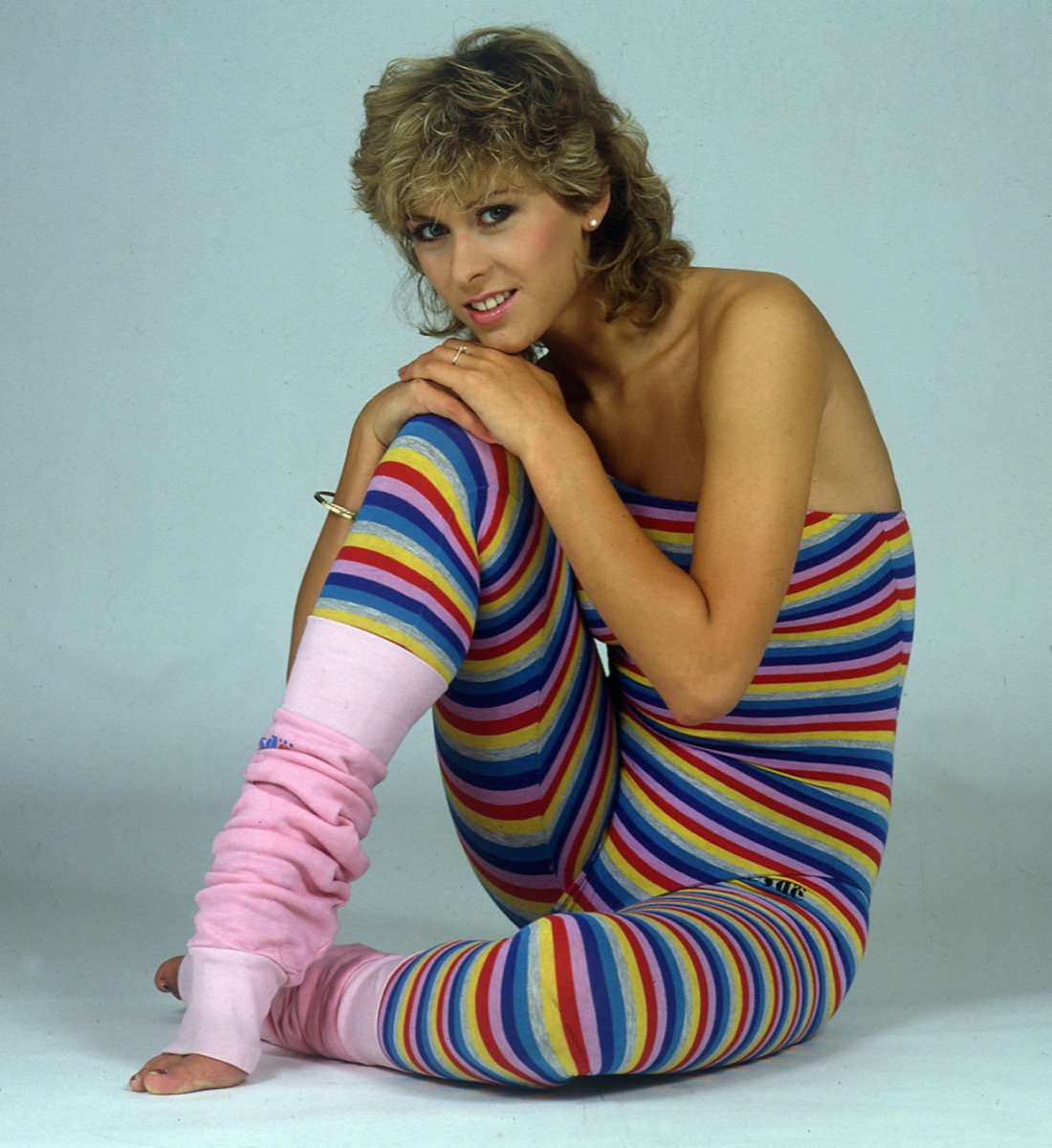
Flashdance. Fame. These are just a few of the films that helped catapult leg warmers into the spotlight. Combined with the aerobics craze that took this decade by storm, you really couldn’t go anywhere in the ’80s without spotting at least a few ladies in leg warmers.
1985: Shoulder Pads

With more women joining the workforce, the 1980s also saw the revival of some of the more modest trends from the ’50s—albeit, with a modern flair. Women’s suits and workwear dresses made during this time often featured cut foam shoulder pads, placed there to channel a more masculine shape and convey power and influence.
1986: Spandex

What material goes best with a good pair of leg warmers? Spandex, of course! Though today the material is most often seen at the gym, the fashion-forward women and men of the ’80s utilized the stretchy fabric in everything from aerobics attire to evening ensembles.
1987: Lace
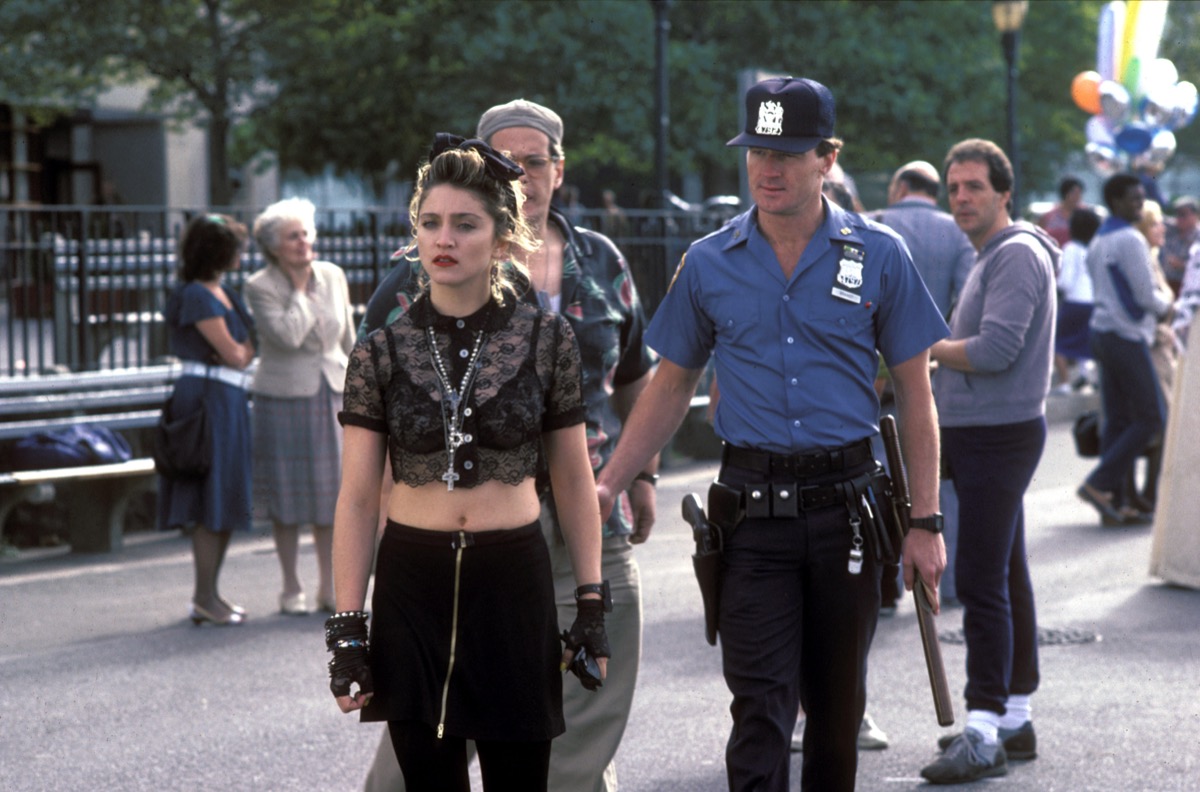
Another style that Madonna helped popularize was lace. In the ’80s, women could be seen wearing the fabric as gloves, as tights, as tops, and even as sheer dresses. Like fishnet, lace was a versatile material that was sexy but also left something to the imagination.
1988: Fanny Packs

The popular athleisure attire of the 1980s gave way to the rise of the buckled bag known as the fanny pack. In 1988, Adweek even named the fanny pack the “Hottest Product of the Year”—and during this time, even high-end fashion houses like Chanel were producing their own versions of the bag.
1989: Bucket Hats
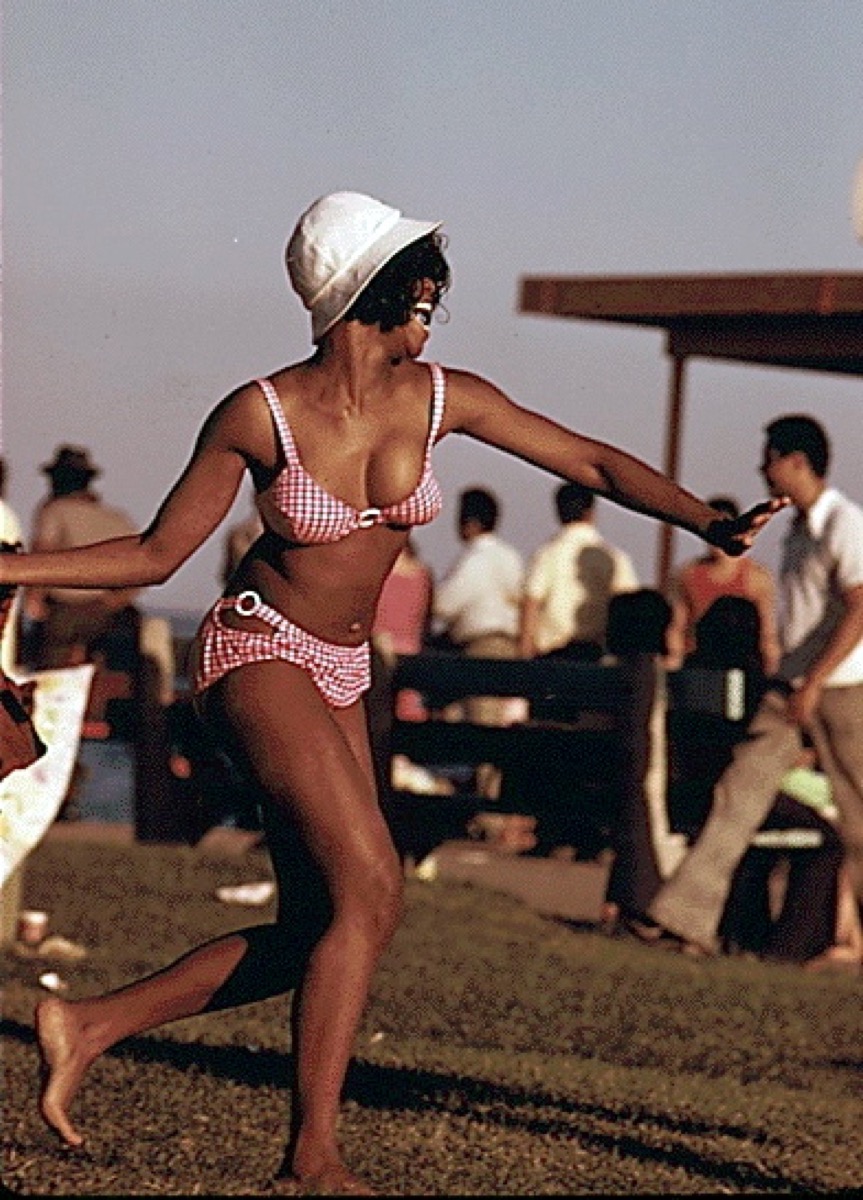
Bucket hats were considered an essential part of a high-end and sophisticated wardrobe in the ’60s. However, it wasn’t until the ’80s that the hats became popular street-style accessories. During this time period, you would find rappers, fashion icons, and even professionals sporting a version of the hat—and somehow, all of them would be stylish in their own right.
1990: The Shell Suit

Why or how the shell suit was ever in style is unclear, but it was. The lightweight nylon tracksuit reached peak popularity in the late ’80s and early ’90s—and then just as quickly as it rose to prominence, it disappeared.
1991: Leggings

In the ’60s and ’70s, most of the people wearing leggings as pants were members of the glam-rock movement. In the late ’80s and early ’90s, however, leggings were so popular that they even surpassed jeans at one point as the most popular bottoms out there. For a while, the hip-hugging garment came second to slightly looser bottoms, but by the 2000s they were back in fashion and haven’t left since.
1992: Grunge

Grunge wasn’t meant to be a fashion style of any sort. Rather, as music journalist Charles R. Cross once wrote, “Kurt Cobain was just too lazy to shampoo.” Fans of the music genre loved how effortless and affordable the everyday look was, and so whether punk rockers liked it or not, they were the face of both a music and a fashion movement.
1993: Neon

Subtlety wasn’t exactly the 1990’s strong suit. Particularly during the earlier half of the decade, tracksuits, dad sneakers, and fanny packs were featured in bright neon shades of orange, green, pink, and blue, all of which clashed and yet somehow worked together.
1994: Feminine Fashion
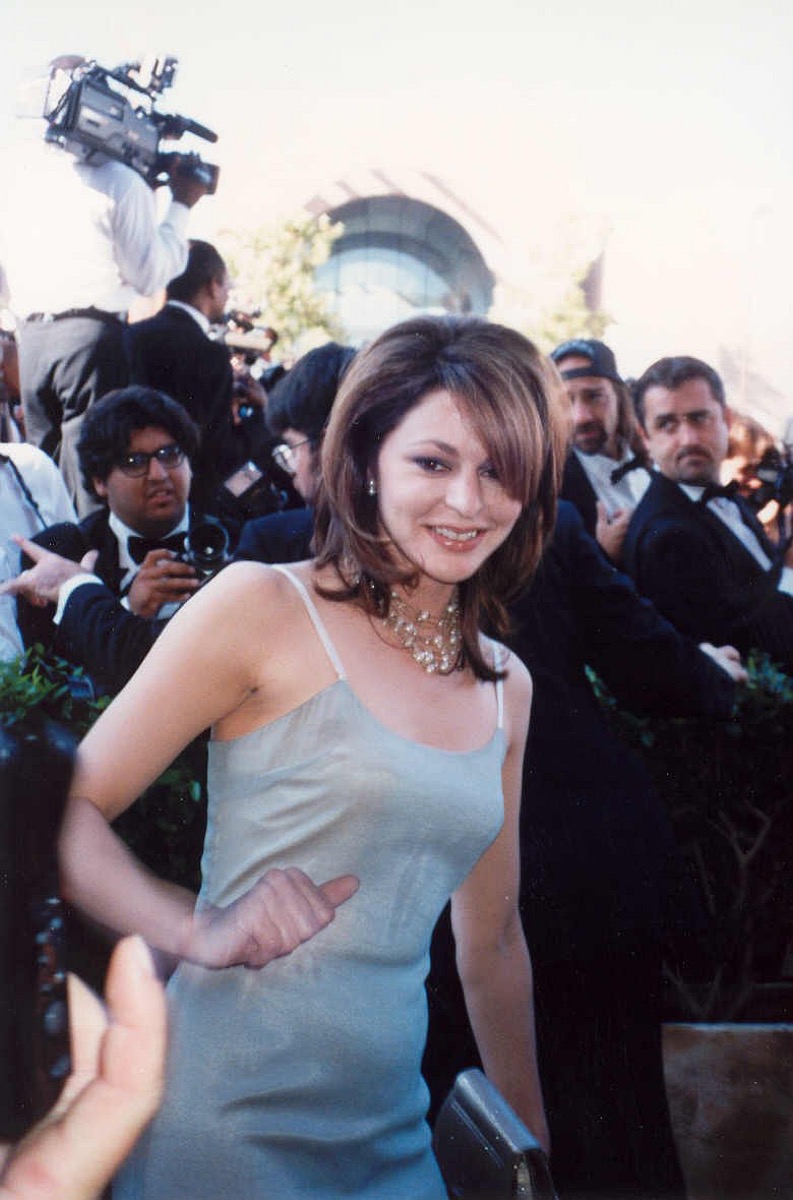
Silk slips, baby doll dresses, and satin blouses were just some of the garments worn by women in the mid-1990s. The year 1994 specifically brought about a new wave of feminine fashion, with celebrities like Jennifer Aniston and Cameron Diaz donning cute little black dresses and tailored trousers all around town.
1995: The Schoolgirl Skirt

Legwarmers and lycra? As if! By 1995, the go-to look for gals was the “sexy schoolgirl” ensemble, popularized in such films as Clueless and Empire Records. The typical school-girl chic outfit features a short plaid skirt, knee highs, pantyhose, and chunky shoes, but it can also include a slip dress, baby doll tee, or undersized sweater of some sort.
1996: Clogs

Cork clogs were the shoe du jour back in the ’90s. Borrowed from Swedish culture, these platform shoes were suitable for men and women alike—and the higher the platform, the more stylish the clog.
1997: Animal Print Everything

In the ’90s, fashionistas expanded beyond leopard print and began to experiment with other animal prints like zebra, tiger, and cheetah. In some cases—most notably via Lisa Frank—the neon and animal print trends would collide to create vibrant and exotic patterns that now just feel tacky.
1998: Chokers

No trendy ’90s wardrobe was complete without a trusty choker. Though different variations of the neck accessory existed even back then, the most popular style was easily the “tattoo” choker, a cheap piece of plastic that could somehow make any outfit marvelous.
1999: Turtlenecks
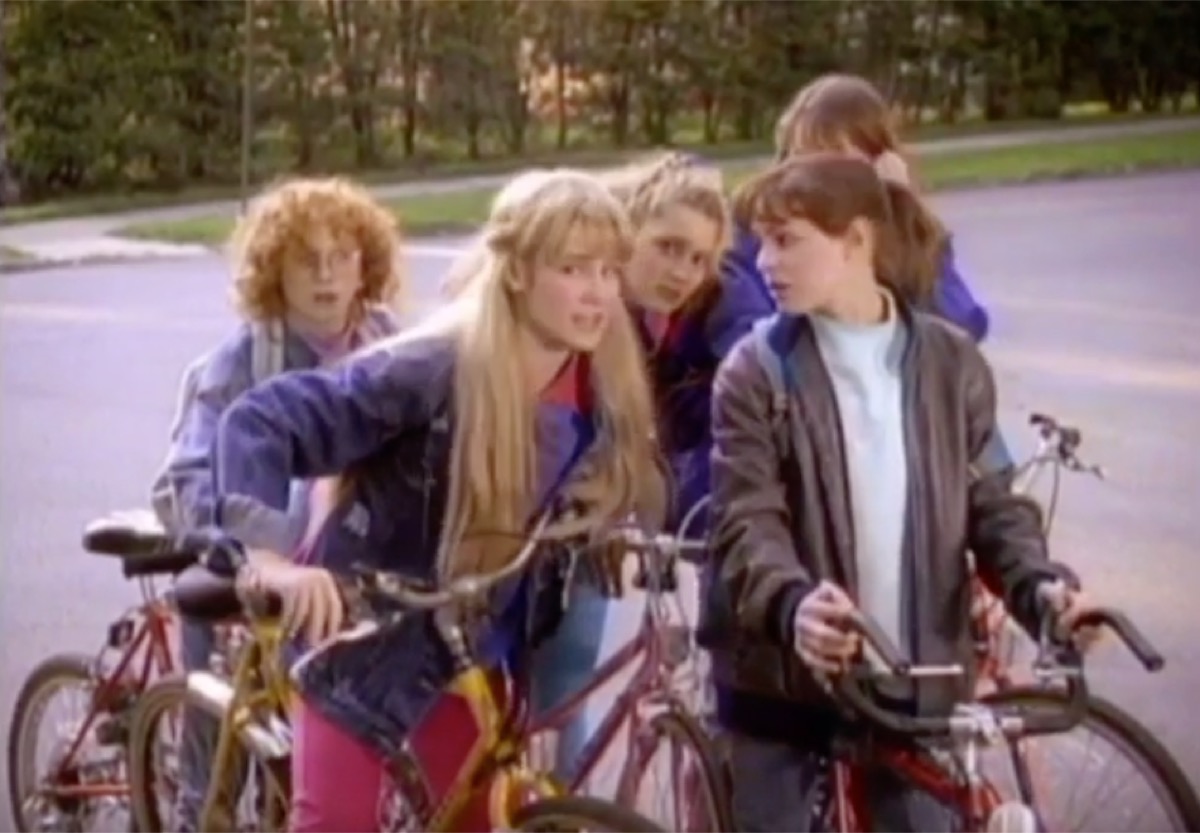
You could scour the closet of a grunge fanatic or a feminine icon and either way, you’d probably find at least a few turtlenecks. In the last decade of the 20th century, the high-necked collars were paired with jeans, worn under dresses, and even styled for the red carpet.
2000: Y2K Fashion

The garments and accessories that were considered Y2K were heavily influenced by technology and the futuristic approaches to design that were common in the late 1990s and early 2000s. Think of all the things you’d use to create a robot costume for Halloween—metallics, headphones, wireframe glasses, mesh tops—and that’s basically Y2K in a nutshell. And if you grew up in the 21st century, then you’ll enjoy this list of 20 Things Every “Cool Kid” Growing Up in the 2000s Owned.
To discover more amazing secrets about living your best life, click here to follow us on Instagram!